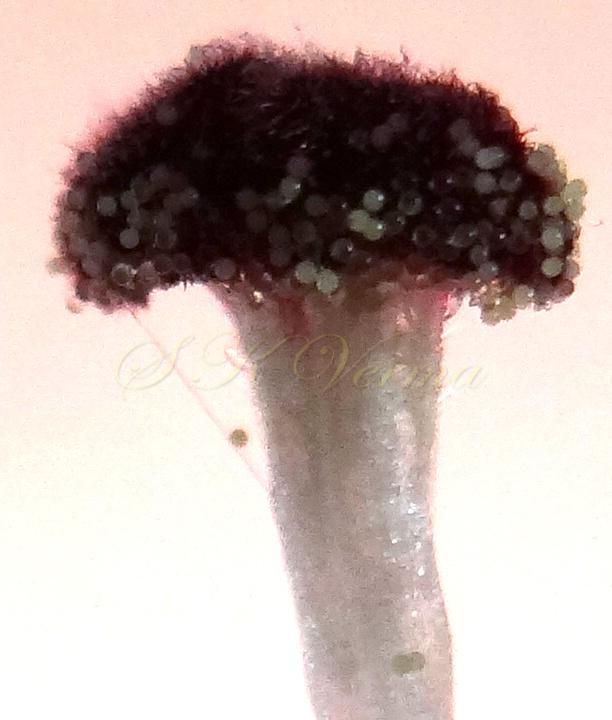ABELMOSCHUS
Abelmoschus Medikus, Malvenfam. 45. 1787; Paul in Sharma et al., Fl. India 3: 300. 1993; Bross., Blumea 14(1): 89. 1966; Hutch., Gen. Fl. Pl. 2: 545. 1967; Fl. China @ eFloras.org 12: 283; Fl. North Amer. @ eFloras.org vol. 6; Fl. Pak. @ eFloras.org p. 24.
Herbs, annual, biennial or perennial, often hispid or tomentose, hairs often simple. Stipules linear. Leaves entire or palmately 3-5-lobed. Flowers actinomorphic, usually bisexual, 5-merous, hypogynous, solitary, axillary or terminal racemes by reduction of leaves, yellow or red. Epicalyx lobes 4-16, usually filiform, persistent. Calyx spathaceous, splitting along one side at anthesis, apex 5-toothed, caducous with corolla. Petals 5, fused, corolla funnelform, usually yellow with a dark red or purple center, corolla falling along with calyx and staminal tube. Stamens many, monoadelphous; staminal column shorter than corolla, included, 5-toothed at apex, with anthers at base or all over. Ovary 5- loculed, ovules many per locule, axile placentation; style single with sessile capitate stigmas. Capsule elongate, loculicidal, pubescent or hispid. Seeds reniform or globose, many, glabrous, smooth.
11 species
Abelmoschus esculentus
Abelmoschus esculentus (L.) Moench, Methodus 1: 617. 1794. Fl. China @ eFloras.org 12: 285; Fl. Pak. @ eFloras.org p. 24; Fl. North Amer. @ eFloras.org vol. 6; A. longifolius (Willd.) Kostel., Allg. Med.-Pharm. Fl. 5: 1859. 1836; Hibiscus esculentus L., Sp. Pl. 696. 1753; Masters in Hook. f., Fl. Brit. India 1:343. 1875. H. longifolius Willd. Sp. Pl., ed.4 3(1): 827. 1800.
Erect, annual herb, 0.5-2.5 m tall, most parts with sparse prickly hairs. Stem often tinged red, hollow, with stiff prickly hairs. Stipules filiform, 7-18 mm long, sparsely hirsute, few hairs glandular. Leaves alternate, petiolate; petioles 7-27 cm long, long hirsute, often with pubescent adaxial groove; leaf blade palmately 3-7-lobed, 5-30 cm long and broad, broadly ovate to orbicular, cordate at base, lobes ovate to lanceolate or oblong, coarsely serrate to crenate, sparsely hirsute on both surfaces. Flowers solitary, axillary, actinomorphic, bisexual, 5-merous, hypogynous; pedicels 0.5-1.5 cm long, up to 5 cm long in fruit, sparsely strigose. Epicalyx segments 7-11, free, 7-12 mm x ca. 1.5 mm, hirsute, linear to lanceolate, caducous. Calyx ca. 2.5 cm long, spathaceous, splitting along 1-side at anthesis, apex 5-toothed, densely stellate or simple pubescent, caducous with corolla. Petals 5, fused at base, corolla funnelform, 5-7 cm in diameter, yellow with dark purple centre, petals 3.5-5 cm x 3-4 cm, twisted, obovate. Stamens many, monoadelphous; staminal column shorter than corolla, 2-2.5 cm long, 5-toothed at apex, with anthers all over, falling along with calyx and corolla. Ovary 5-locular, many ovules per loculus, axile placentation, style single with 5 dark purple capitate stigmas, densely tomentose. Capsule 7-25 cm long, 1.5-3 cm across, cylindrical, 5-angled, acuminate, simple hairy, hirsute when young. Seeds 5-15 in each cell, 3-6 mm across, reniform or ovoid, dark brown, glabrous.
Common Names: Lady’s finger, Okra, Okro or Ochro; Bhindi (Hindi)
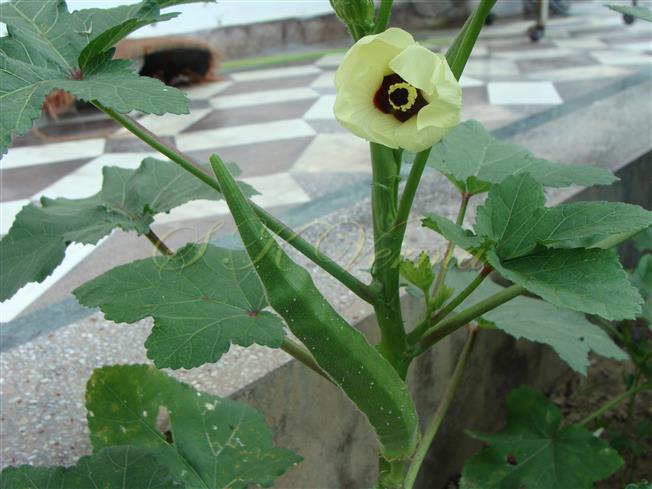
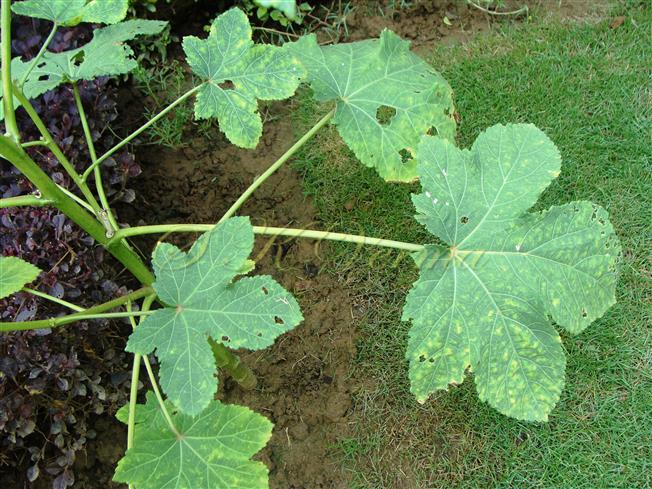
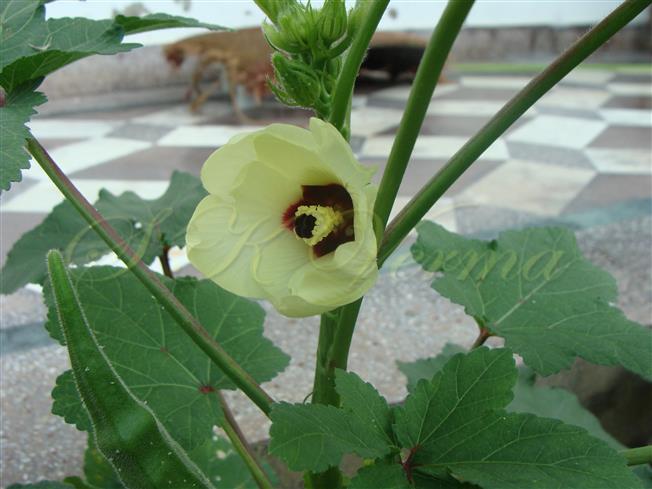
-DSC07026.jpg)
-DSC07022.jpg)
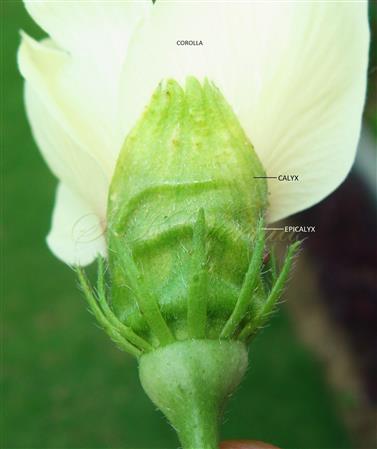
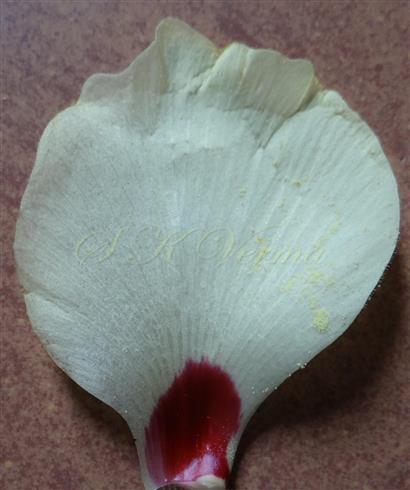


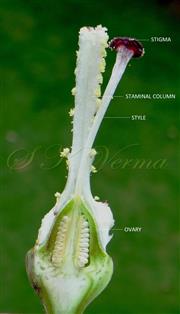
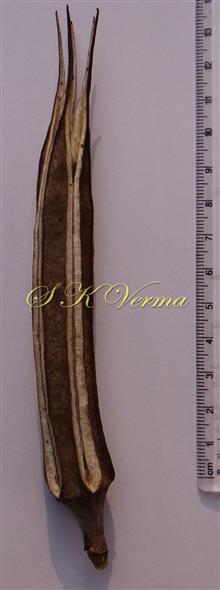
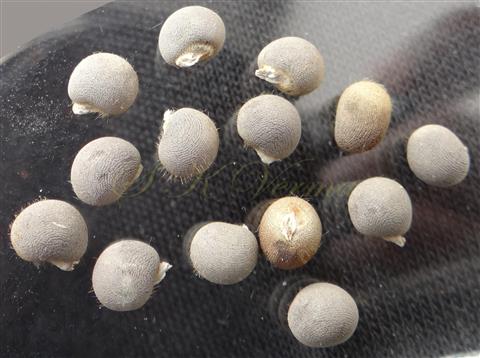
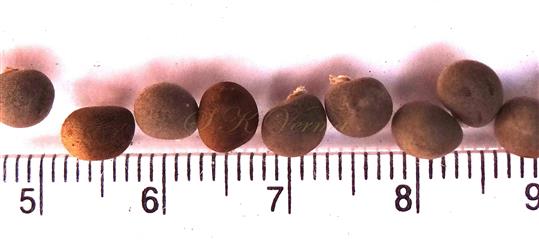




-DSC07026.jpg)
-DSC07022.jpg)



